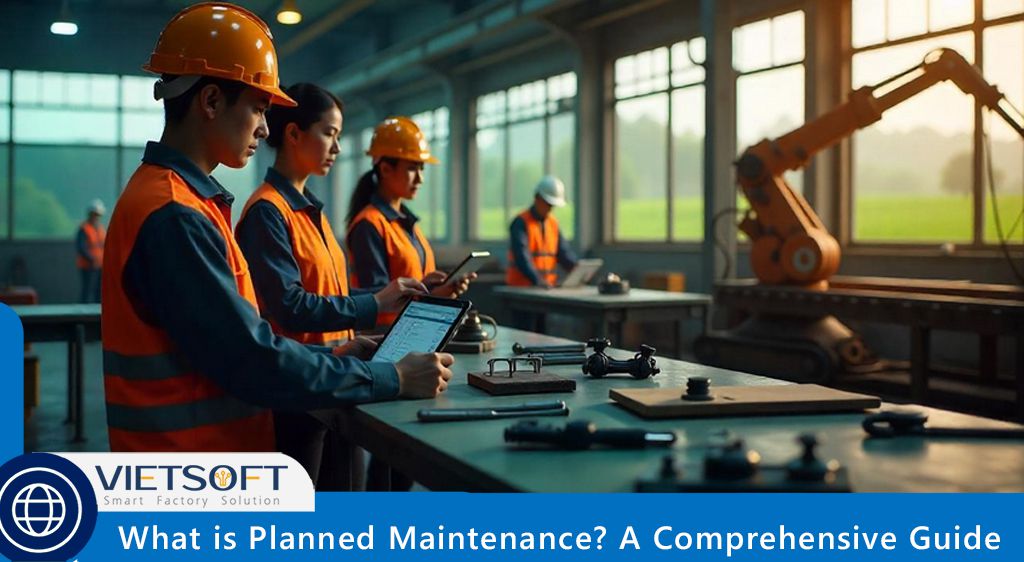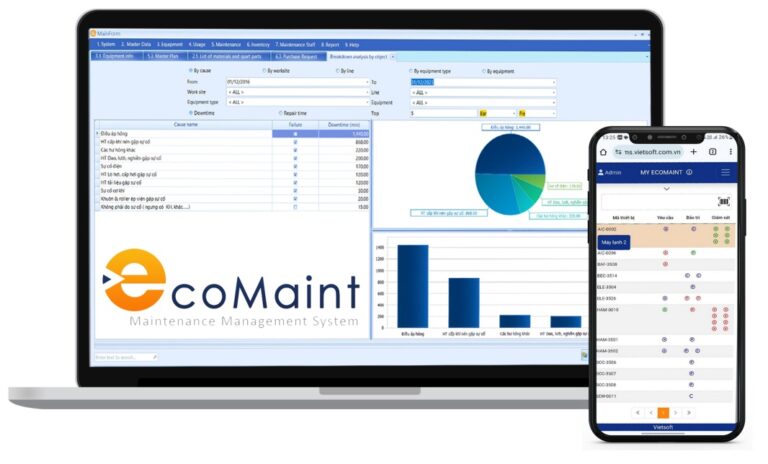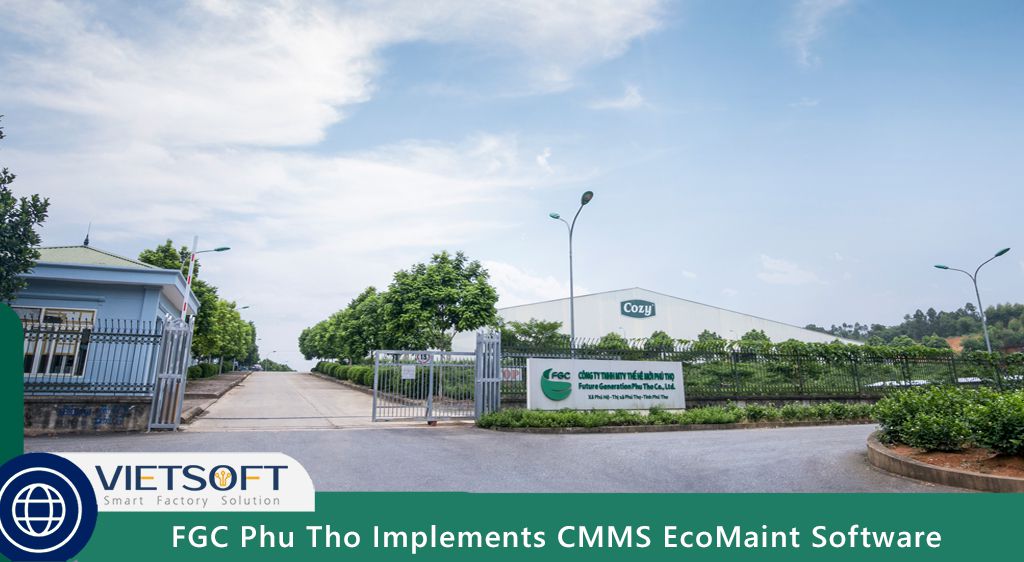
Planned maintenance is a cornerstone of modern industrial operations, enabling businesses to maximize asset efficiency, reduce downtime, and enhance workplace safety. This guide delves into the essence of planned maintenance, its types, benefits, and implementation strategies. Designed for maintenance professionals and facility managers.
I. Understanding Planned Maintenance: A Proactive Approach
Planned maintenance refers to a strategic, proactive approach to maintaining assets by scheduling and documenting tasks to prevent unexpected failures and minimize operational disruptions. Unlike reactive maintenance, which addresses issues after they occur, planned maintenance anticipates potential problems and addresses them before they escalate. This approach involves identifying maintenance needs, scheduling tasks based on measurable triggers (e.g., usage, time, or condition), and ensuring resources like parts, tools, and skilled technicians are available to execute the work efficiently.
The goal of planned maintenance is to extend asset lifespans, reduce downtime costs, and improve operational efficiency. According to a 2023 Ponemon Institute report, unplanned downtime costs large organizations approximately $9,000 per minute, while small and medium-sized businesses face losses between $137 and $427 per minute. A well-executed planned maintenance strategy mitigates these costs by ensuring assets remain in optimal condition, fostering a safer and more productive work environment.
II. Key Components of Planned Maintenance
A successful planned maintenance program includes:
- Asset Inventory: A comprehensive list of all assets, including their condition, specifications, and maintenance history.
- Maintenance Schedules: Predefined intervals for inspections and tasks based on manufacturer recommendations or operational data.
- Resource Planning: Ensuring availability of parts, tools, and skilled labor to perform maintenance without delays.
- Documentation: Detailed records of maintenance tasks, including standard operating procedures (SOPs), checklists, and safety protocols.
- Performance Tracking: Monitoring key performance indicators (KPIs) to assess the effectiveness of the maintenance program.
By integrating these components, businesses can create a robust framework that aligns maintenance activities with operational goals, ensuring long-term reliability and cost savings.
III. Types of Planned Maintenance
Planned maintenance encompasses two primary strategies: planned preventive maintenance and planned unscheduled maintenance. Each serves distinct purposes based on asset criticality, cost considerations, and operational impact.
1. Planned Preventive Maintenance (PPM)
Planned preventive maintenance involves routine inspections and tasks performed at predetermined intervals to prevent equipment failures. These intervals are based on triggers such as:
- Time-Based: E.g., scheduling an HVAC system check every six months.
- Usage-Based: E.g., changing a vehicle’s oil after 15,000 kilometers.
- Condition-Based: E.g., replacing a conveyor belt when sensors detect excessive wear.
PPM is ideal for assets with:
- High replacement costs (e.g., industrial compressors).
- Critical roles in operations (e.g., production line machinery).
- Statutory maintenance requirements (e.g., safety-compliant equipment).
- Predictable failure patterns that worsen with use or age.
For example, a manufacturing plant might schedule monthly lubrication of machinery bearings to prevent wear, reducing the likelihood of unexpected breakdowns. PPM leverages industry standards and data analytics to optimize maintenance intervals, ensuring assets remain operational and compliant.
2. Planned Unscheduled Maintenance (Run-to-Failure)
Planned unscheduled maintenance, also known as run-to-failure, involves preparing for maintenance tasks but only executing them after an asset fails. This strategy is cost-effective for non-critical assets where the cost of preventive maintenance outweighs the cost of replacement or repair. Key characteristics include:
- Pre-planned repair procedures and spare parts availability.
- Minimal impact on production if the asset fails.
- Suitable for assets with low financial value or short lifespans.
For instance, a factory might stock spare light bulbs for hallway lighting and replace them only when they burn out, as the downtime and replacement cost are minimal. This approach requires careful planning to ensure rapid response times, minimizing disruptions even when failures occur.
IV. Planned Maintenance vs. Unplanned Maintenance
Understanding the distinction between planned and unplanned maintenance is critical for optimizing maintenance strategies.
- Planned Maintenance: Involves proactive scheduling and resource allocation to prevent or prepare for failures. It includes both preventive and run-to-failure strategies, ensuring resources are ready before maintenance is needed.
- Unplanned Maintenance: Occurs reactively after an unexpected failure, often without pre-arranged resources. This can lead to longer downtime, higher costs, and increased stress due to rushed repairs.
For example, unplanned maintenance might involve scrambling to source a replacement part for a critical machine, incurring expedited shipping costs and lost production time. In contrast, planned maintenance ensures parts are on hand and tasks are scheduled during low-impact periods, such as planned production shutdowns.
Types of Unplanned Maintenance
Unplanned maintenance can take several forms, each with unique implications:
- Reactive Maintenance: Addresses unexpected breakdowns, often for non-critical assets. While cost-effective for low-value items, it’s undesirable for critical equipment due to high downtime costs.
- Corrective Maintenance: Involves fixing issues identified during operation, even if they occur before scheduled maintenance. For example, repairing a motor after detecting unusual vibrations during a routine check.
- Opportunistic Maintenance: Takes advantage of unplanned downtime (e.g., a production halt) to perform maintenance tasks, leveraging available resources to address issues proactively.
While unplanned maintenance may be unavoidable in some cases, a robust planned maintenance program minimizes its frequency, focusing resources on proactive solutions.
V. Benefits of Planned Maintenance
Planned maintenance offers both short-term and long-term benefits, making it a vital strategy for modern industrial operations. Below, we explore these advantages in detail.
Short-Term Benefits
1. Comprehensive Asset Visibility
Starting a planned maintenance program requires creating an accurate asset inventory, including details like schematics, manuals, and current condition. This process involves physical inspections, providing a clear baseline of asset health. For example, cataloging a fleet of forklifts reveals maintenance needs, such as worn tires or hydraulic issues, enabling targeted interventions.
2. Standardized Processes
Planned maintenance establishes consistent procedures for inspections and tasks. Standardized checklists ensure technicians follow best practices, reducing variability and errors. For instance, a standardized procedure for calibrating industrial scales ensures accuracy across all maintenance activities.
3. Reduced Stress Through Scheduling
Scheduling maintenance tasks in advance eliminates the uncertainty of reactive repairs. Research shows that uncertainty increases stress more than predictable challenges. By scheduling tasks during planned downtime, maintenance teams can work efficiently without the pressure of unexpected breakdowns.
Long-Term Benefits
1. Extended Asset Lifespans
Regular maintenance, such as lubricating moving parts or replacing filters, prevents premature wear and tear. For example, a well-maintained HVAC system can operate efficiently for 15–20 years, compared to 10 years for a neglected system, maximizing return on investment.
2. Reduced Downtime
By addressing minor issues before they escalate, planned maintenance minimizes unplanned downtime. For instance, scheduling quarterly inspections of conveyor systems can prevent jams that halt production, saving thousands in lost productivity.
3. Cost Savings
Planned maintenance reduces the need for expensive emergency repairs and expedited parts orders. A 2023 IBM report notes that unplanned downtime costs 35% more per minute than planned downtime, highlighting the financial impact of reactive approaches.
4. Improved Workplace Safety
Regular maintenance ensures equipment operates safely, reducing the risk of accidents. For example, routine checks on pressure vessels prevent failures that could endanger workers, aligning with OSHA safety standards.
5. Enhanced Knowledge Transfer
Documenting maintenance procedures in a centralized system preserves institutional knowledge. This is critical in industries with high technician turnover, ensuring junior staff can access senior technicians’ expertise through digital checklists and SOPs.
VI. How to Implement a Planned Maintenance Program
Implementing a planned maintenance program requires a structured approach. Below is a step-by-step guide tailored for maintenance professionals.
Step 1: Conduct a Criticality Analysis
Identify which assets require preventive maintenance versus run-to-failure strategies. A criticality analysis assesses:
- Operational Impact: How critical is the asset to production? (E.g., a primary production line vs. a backup generator.)
- Replacement Cost: Is preventive maintenance cost-effective compared to replacement?
- Failure Patterns: Does the asset have predictable failure modes?
For example, a pharmaceutical plant might prioritize preventive maintenance for autoclaves due to their critical role in sterilization, while allowing run-to-failure for non-critical office printers.
Step 2: Develop Maintenance Schedules
Use manufacturer guidelines, operational data, and condition-based monitoring to establish maintenance intervals. For instance:
- Time-Based: Schedule annual boiler inspections.
- Usage-Based: Replace conveyor belts after 10,000 hours of operation.
- Condition-Based: Use IoT sensors to monitor motor vibrations and schedule maintenance when thresholds are exceeded.
Step 3: Create Detailed Work Orders
Document the scope of each maintenance task, including:
- Required tools and parts (e.g., specific wrench sizes or filter types).
- Safety protocols (e.g., lockout-tagout procedures).
- Step-by-step instructions to ensure consistency.
For example, a work order for a pump maintenance task might specify: “Replace seals, lubricate bearings, and check alignment using a laser alignment tool.”
Step 4: Prioritize Tasks
Assign priority levels based on urgency and impact:
- Emergency: Immediate safety or operational risks (e.g., a leaking hydraulic system).
- High Priority: Tasks affecting short-term operations (e.g., a critical motor repair).
- Medium Priority: Preventive tasks for long-term efficiency (e.g., filter replacements).
- Low Priority: Non-critical tasks (e.g., cosmetic repairs).
Step 5: Leverage CMMS Software
A Computerized Maintenance Management System (CMMS) like Vietsoft’s CMMS EcoMaint streamlines planned maintenance by:
- Automating work order creation and scheduling.
- Tracking inventory to ensure parts availability.
- Generating reports to monitor KPIs like asset uptime and maintenance costs.
Step 6: Train the Team
Ensure all technicians are trained on maintenance procedures, safety protocols, and CMMS usage. Regular training sessions and trial runs help teams adapt to new processes, improving execution and confidence.
Step 7: Monitor and Optimize
Track KPIs such as:
- Planned Maintenance Percentage (PMP): The ratio of planned to total maintenance tasks.
- Mean Time Between Failures (MTBF): Measures asset reliability.
- Maintenance Cost per Asset: Evaluates cost-effectiveness.
Use data insights to refine schedules, eliminate unnecessary tasks, and optimize resource allocation. For instance, if data shows a machine requires less frequent lubrication, adjust the schedule to reduce labor costs.
VII. Challenges of Planned Maintenance
While highly beneficial, planned maintenance presents challenges that require careful management:
- Scheduling Conflicts: Maintenance tasks may disrupt production, especially in 24/7 operations. Solution: Schedule tasks during planned downtime or low-production periods.
- Resource Allocation: Limited parts or technician availability can delay tasks. Solution: Use CMMS to forecast inventory needs and assign skilled personnel efficiently.
- Initial Costs: Planned maintenance requires upfront investment in parts, tools, and software. Solution: Highlight long-term savings to secure leadership support.
By addressing these challenges proactively, organizations can maximize the effectiveness of their planned maintenance programs.
VIII. The Role of CMMS EcoMaint in Planned Maintenance
Implementing a planned maintenance program is significantly enhanced by using advanced tools like Vietsoft’s CMMS EcoMaint. Designed to streamline maintenance workflows, CMMS EcoMaint offers features tailored to modern industrial needs:
- Automated Scheduling: Set recurring maintenance tasks based on time, usage, or condition triggers.
- Mobile Access: Technicians can access work orders, checklists, and asset data on smartphones, reducing downtime and improving efficiency.
- Real-Time Reporting: Monitor KPIs like asset availability and maintenance costs to make data-driven decisions.
- Inventory Management: Track spare parts and predict usage to avoid stockouts or overstocking.
- Compliance Tracking: Maintain digital records for regulatory audits, ensuring compliance with safety standards.
By integrating CMMS EcoMaint, businesses can transform planned maintenance from a manual, error-prone process into a streamlined, data-driven strategy. Curious to see how CMMS EcoMaint can revolutionize your maintenance operations? Discover the CMMS EcoMaint solution here. Contact us for consultation via hotline: 0986778578 or email: sales@vietsoft.com.vn.
IX. Conclusion: Why Planned Maintenance Matters
Planned maintenance is a proactive strategy that empowers organizations to minimize downtime, reduce costs, and enhance workplace safety. By implementing preventive and run-to-failure maintenance strategies, businesses can optimize asset performance and extend lifespans. Leveraging tools like CMMS EcoMaint ensures seamless execution, providing real-time insights and streamlined workflows. Whether you manage a manufacturing plant, a vehicle fleet, or a hospitality business, a well-executed planned maintenance program is key to operational success.
For maintenance professionals seeking to elevate their operations, adopting a robust planned maintenance strategy with the support of advanced CMMS software is a game-changer. Start today by assessing your assets, creating a maintenance schedule, and exploring how Vietsoft’s CMMS EcoMaint can transform your approach to asset management.
X. Frequently Asked Questions (FAQs)
What is the difference between planned and preventive maintenance?
Planned maintenance encompasses all proactive maintenance strategies, including preventive maintenance (routine tasks to prevent failures) and run-to-failure maintenance (preparing for repairs after failure). Preventive maintenance is a subset of planned maintenance, focusing on preventing breakdowns through scheduled tasks.
How does planned maintenance reduce costs?
By addressing issues before they escalate, planned maintenance avoids expensive emergency repairs and expedited part orders. It also extends asset lifespans, reducing replacement costs.
What assets benefit most from planned maintenance?
Critical assets with high replacement costs, predictable failure patterns, or statutory requirements (e.g., production machinery, HVAC systems) benefit most from planned preventive maintenance. Non-critical, low-cost assets (e.g., light bulbs) may suit planned unscheduled maintenance.
How can CMMS software improve planned maintenance?
CMMS software like Vietsoft’s CMMS EcoMaint automates scheduling, tracks inventory, and provides real-time KPI insights, ensuring efficient task execution and resource management.




